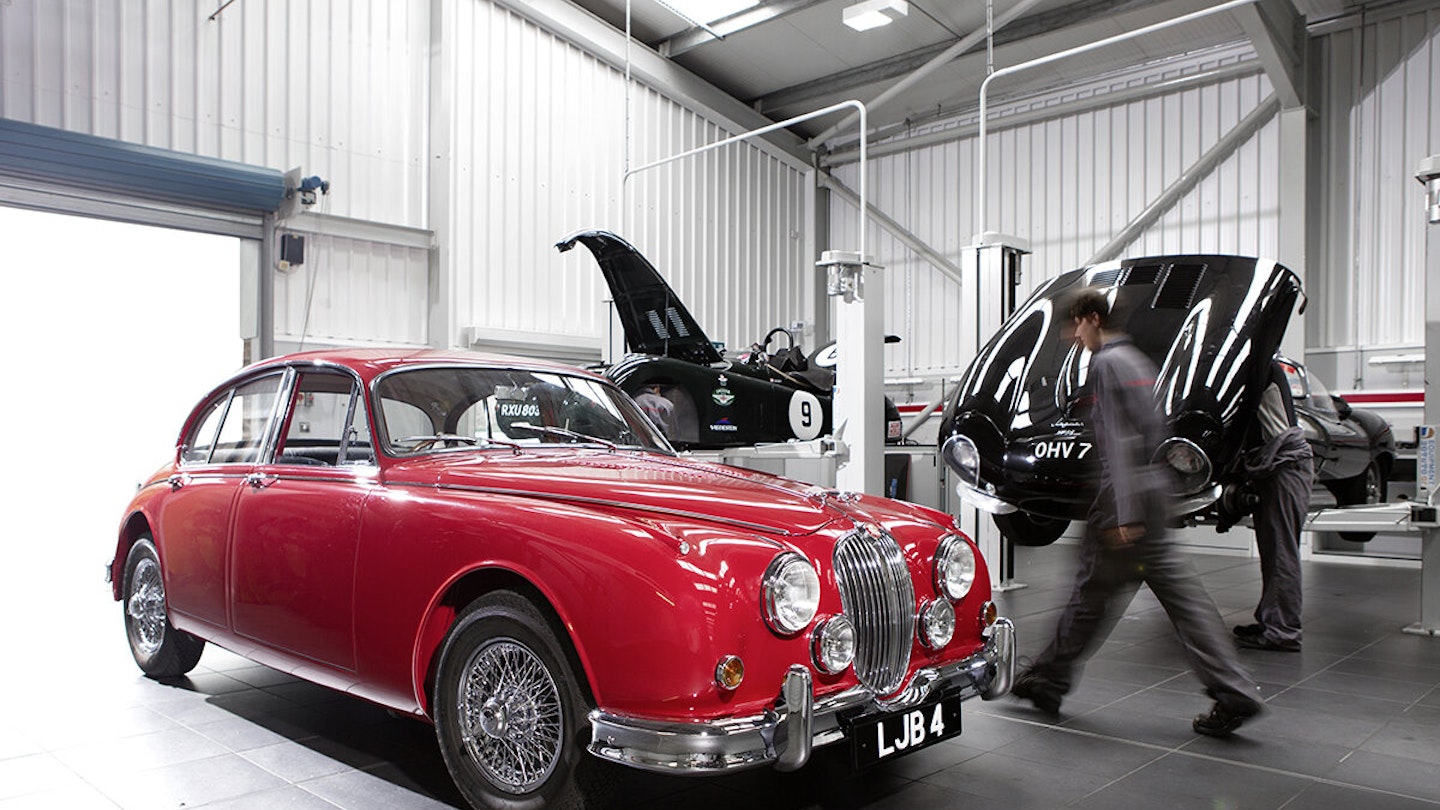Words Paul Hardiman Photography Richard Pardon
‘I wasn’t looking for a Coombs Mk2, but when I saw in print that the car had been found, I had to have it,’ says Shaun Lynn (left), a well-known racer and owner of 4 WPD, the original Lightweight E-type. ‘I liked the idea of being able to put my mark on a car, to restore it in the way that it needed to be done. I wanted perfection – anything less just wouldn’t be right. So we’ve kept and repaired every panel, and when the guys told me it needed a new interior, I told them to put back the original.’
‘No one ever said “stop” as such,’ says CKL Developments boss Chris Keith-Lucas. ‘But yes, there was a low point when we discovered how rusty it really was. We did a lot of heart-searching before pressing on. But it was worth it, and client and restorers alike are thrilled with the outcome.’
The Mk2 didn’t look too bad when racer Rae Davis found it, having rested in an open shed with the tail hanging out in the New Forest for 30 years. But, as the men from CKL were to discover, the car was plagued with ‘a different kind of rust. Storage rust, not driving rust’, as Keith-Lucas puts it. Though it cleaned up pretty well and the structure looked fairly solid, atmosphere and condensation had worked their evils inside the box and channel sections. When they looked further they began to realise how paper-thin – even holed – some sections were.
With the car dismantled by CKL’s Tony van den Dyck, it was off to discover the real state of the sheet metal. ‘We were still at the honeymoon stage,’ says Keith-Lucas. ‘After we’d washed it, it was all starting to look rather good.’ But it was time to uncover the real state of the body, via sanding and sandblasting. Sadly, ‘It was like a pepperpot,’ says Keith-Lucas. ‘But we were determined to save as much of it as possible.’
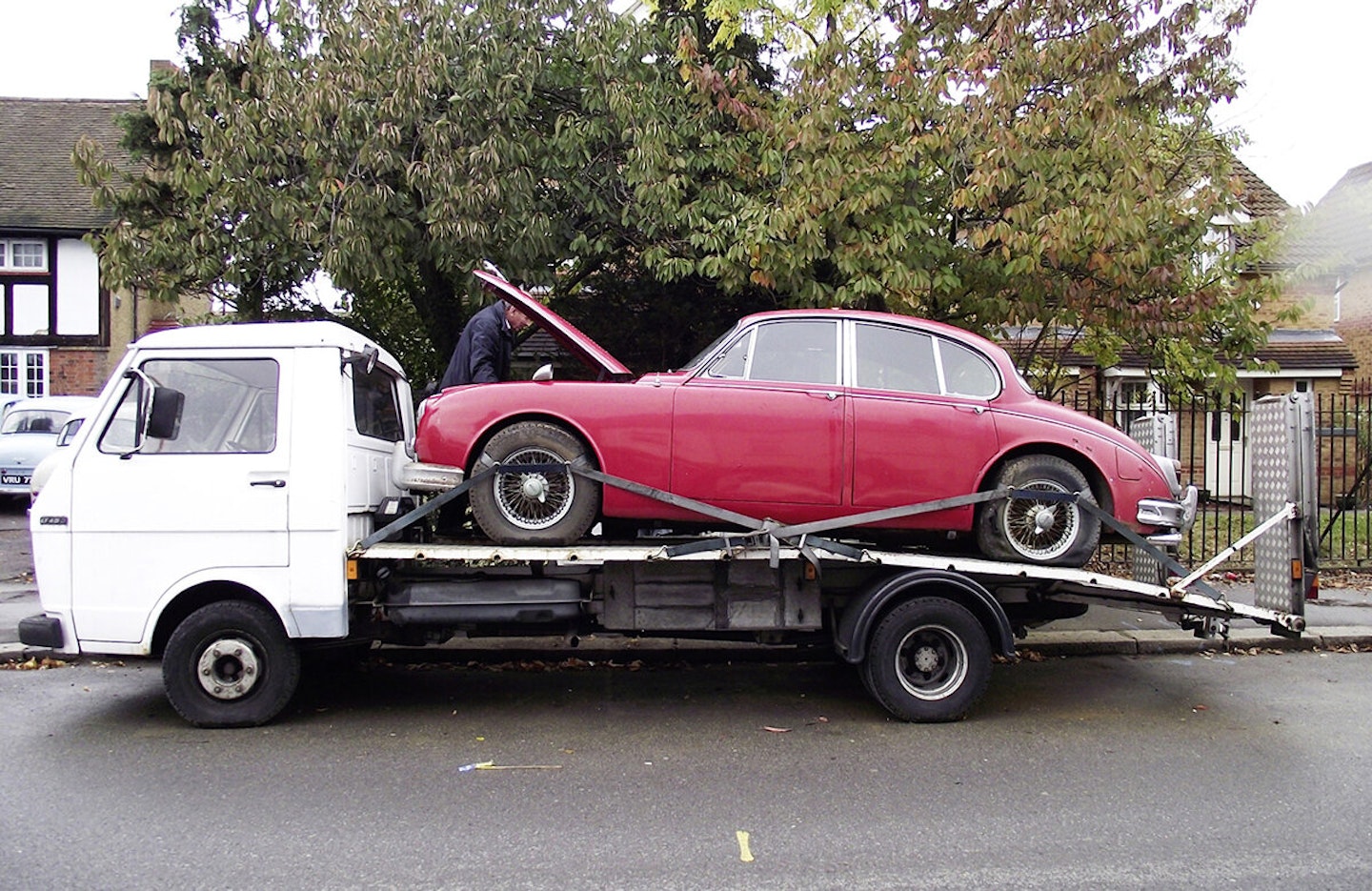
“Most of the bottom six inches of the car was perforated”
— Chris Keith-Lucas
BODYWORK
‘It just went on and on,’ says Chris Keith-Lucas. ‘But the good news was that we were the first people to restore it so it remained original and hadn’t been bodged, apart from the addition of cover sills and a couple of small patch repairs in the floorpan. Most of the bottom six inches of the car was perforated, and the rear quarters were like lace, so had to be cut off and new sections had to be made by hand. Although some repair sections were available off the shelf, none fitted and every part needed work.
It would have been simpler to reshell the car, but it was crucial to keep as much of it as possible in the name of originality. Neil Dawes of Kingswell Coachworks, on site at CKL’s sprawling new premises near Battle, did the actual metalwork and paint. One of the biggest headaches was around the rear spring hangers, a complicated structure Neil had to unpick to see how it was put together, and a jig made up to make sure the springs went back in the right place. Another jig gave a datum for the rear bumper mounts, and other sections that had to be made up by hand were the bumper lips front and rear, the boot opening channel and a section of floorpan that was hand-beaten from sheet metal to match the original pressed floorpans.

Neil says, ‘Every part of it was a challenge. I had to make a lot of the repair sections, such as a section of the floor and the boot channel, as they weren’t available. I made a frame up to hold the rear spring hangers before I took anything apart so I knew where it was going back in, and did one side at a time so I had something to compare to. It was my first Mk2 and it was like a jigsaw puzzle.
‘The doors were completely rotten and I had to replace the bottom halves as well as the skins. The doors were on and off several times before I even put the skins on, as I wanted a 4mm panel gap and when you offer the skins up that’s not the case. I had to add bits, which were continuously welded and then lead loaded. The boot gutter needed to be completely remade, and it’s in five pieces.
‘I have to admit that it was quite enjoyable, really – I like to get my teeth into a job.’
PAINTWORK
Painting the car presented another problem, because the plan was for it to come out not looking unrealistically shiny, like a boiled sweet. Luckily, as the Jag was more than 30 years old, Nigel Baker, the painter and boss of Kingswell Coachworks, was able to look outside the scope of the water-based paints now required by the Paint Products Directive, which mandates against solvent-based paints except for restoring historic vehicles and buildings. ‘I was able to use a two-pack in the original colour, Carmen Red, with a little matting agent mixed in to make sure it didn’t come out too shiny, just as it would have been originally,’ he says. ‘I painted the inside of the car in one go, and then the outside.’
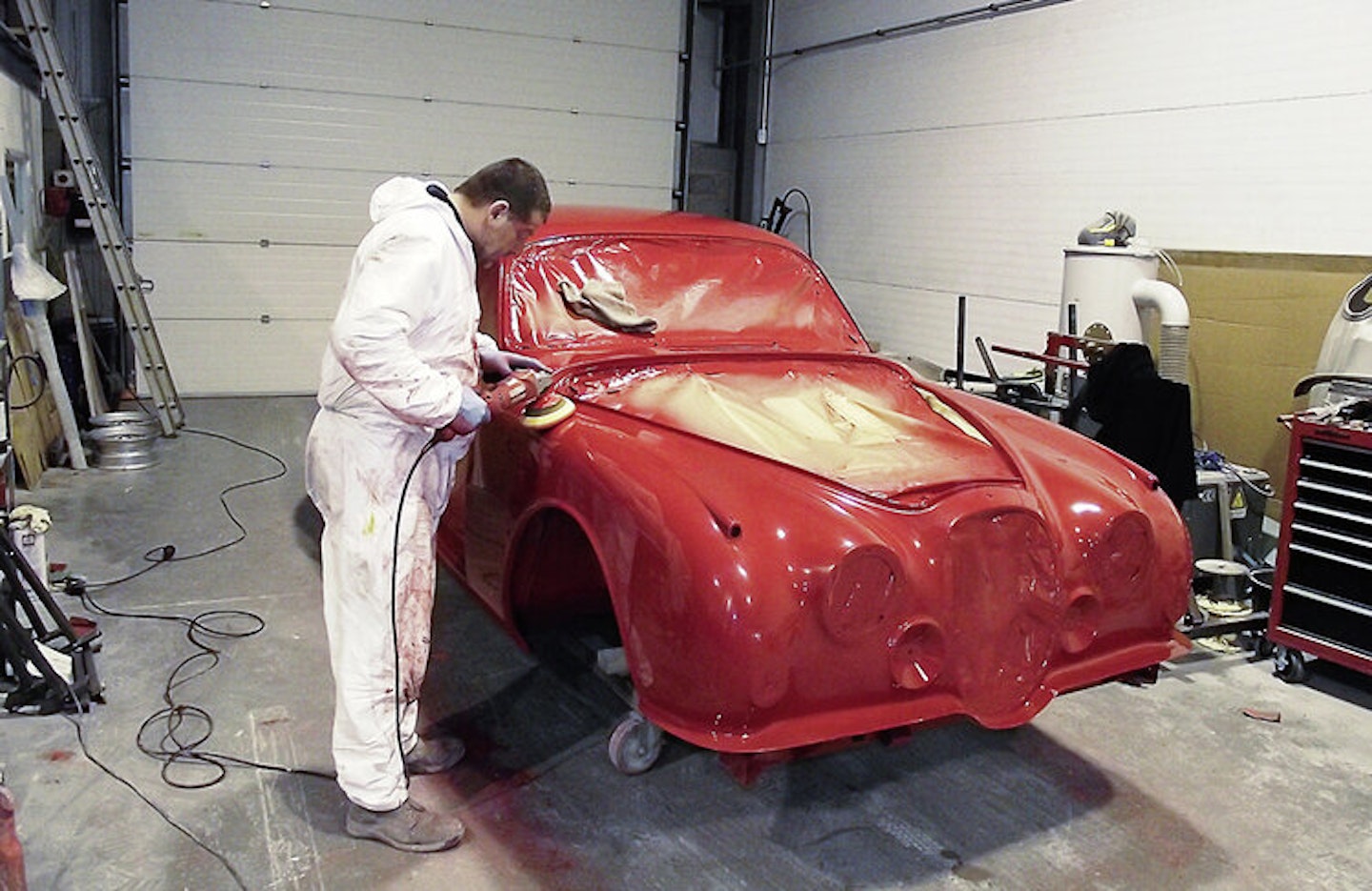
INTERIOR
Thirty years of storage had helped to ensure that the original interior remained – but the leather was dried and cracked and the dashboard timberwork had been hidden under a layer of black paint. Originality was uppermost in the restoration, so luckily the leather revived after a lengthy period of regular feeds. Local trimmer Dave Upton (above) of long-established firm CA Upton & Son did the work. ‘We fed the seats with Connolly hide food over a couple of months until we could flex the leather a bit,’ he says. ‘Before it would have just cracked. Then we cleaned them with a weak soap solution in warm water and a soft brush. The next step was to partially take off the covers to skive in new bits of leather to reinforce it from behind. We can keep patching it up, as long as the owner keeps feeding it to keep it supple.’
Upton fitted a new headlining and carpets, but the door cards were less easy as some of the hardboard backing had rotted away. ‘We used aircraft ply to reinforce it.’
The timber – and there’s a lot in a Mk2: the entire dashboard plus door cappings and trim rails around the side windows – had been painted over and there were screw-holes in the dash.
To rescue it all, CKL went to a local furniture restorer, Ray Page. ‘A lot of it is based on ply, with burr walnut veneer on the dash and I think mahogany on the door trims,’ he says. ‘It was all under black acrylic paint, which hadn’t done it any good at all.
‘The dash had been covered in vinyl. We used a weak ammonia solution to get rid of the years of grime, and then rubbed it with various waxes mixed with differing grades of powder to give a slightly abrasive compound – you mustn’t get the veneer too wet or it delaminates. Then we used traditional colours and polishes to put the colour back. The dash needed a lot of work. I had some walnut that I used to plug the screw holes, and some of the cross-banding was broken. Luckily a firm in London matched it.
‘It’s much more pleasurable than stripping it all off and replacing it with new stuff.’
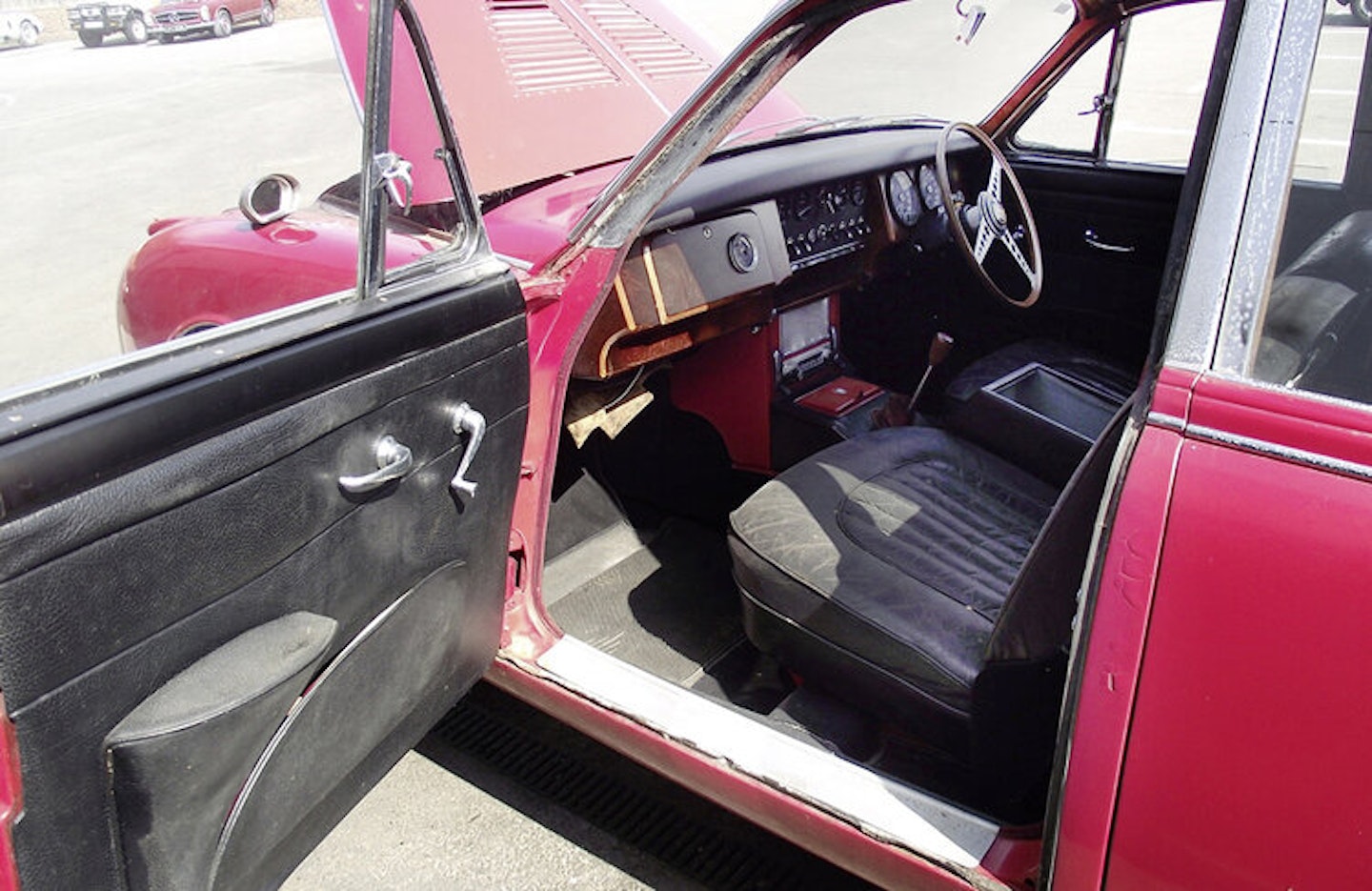
ENGINE & RUNNING GEAR
Though ex-Coombs employee Ken Bell had authenticated the rest of the car, that ‘non-matching’ engine still caused a few worries – especially when it became apparent how much sludge and corrosion lurked in the water galleries, leading to the possibility that the cylinder head would have become porous – in fact, the water pump had already corroded right through, as had the water stub on the inlet manifold. Once he’d seen inside the motor, Ken Bell was confident it was the real deal. ‘The gas flowing and matching of ports indicates that this is an original unit machined by Barwell Engineering,’ he says. The crankshaft balancing appears in the manner of those machined by Skelton Engineering of Guildford. ‘The cylinder head face has been machined as per the Coombs specification and standard camshafts were fitted.’
Tony van den Dyck confirms: ‘The guys who did the head obviously knew what they were doing, as the manifolds and ports were beautifully matched up.’
“It was beautifully blueprinted as I found it”
— Ken Bell, ex-Coombs employee
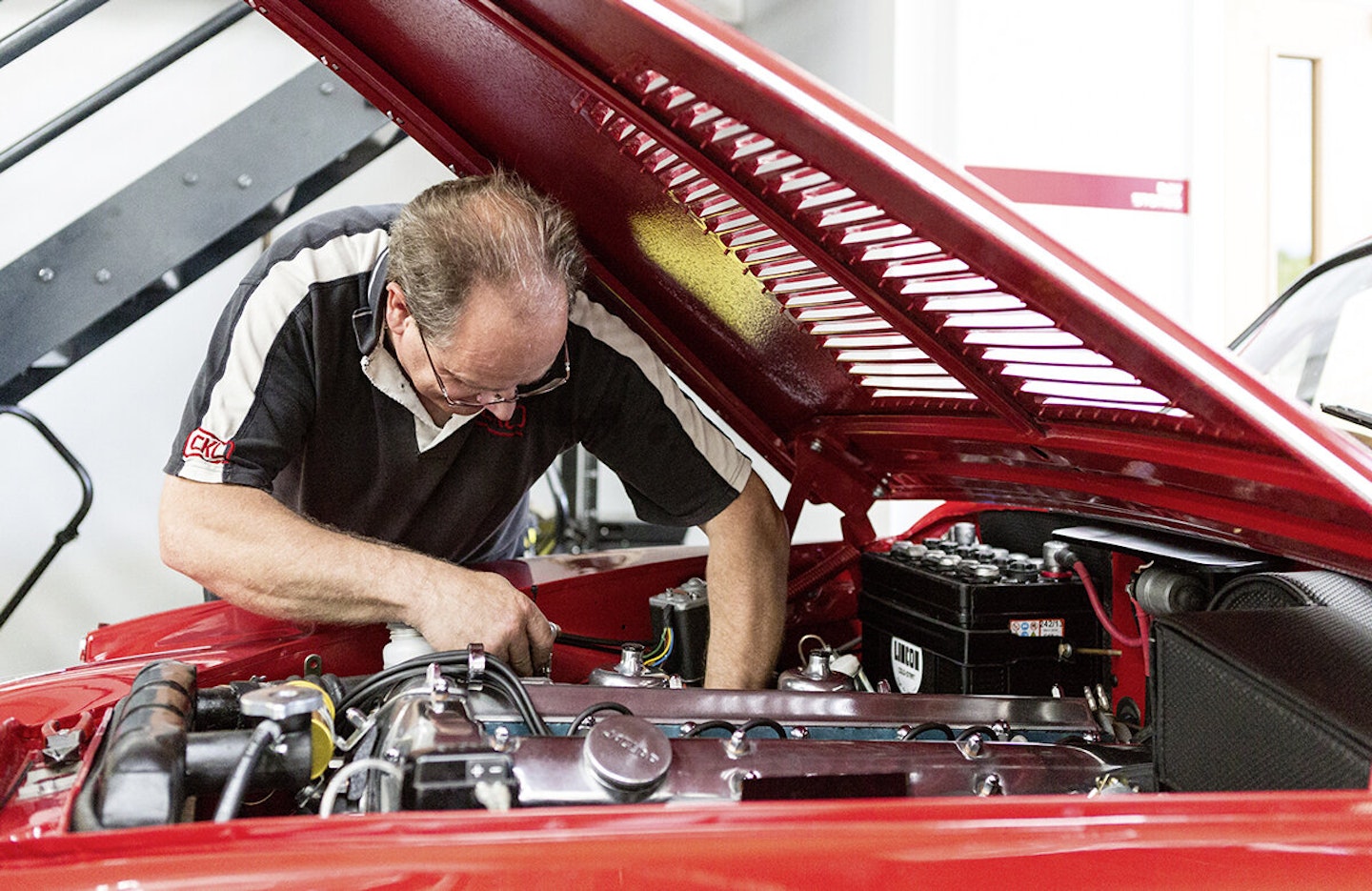
Coombs used a lightened flywheel that required the bolt-holes to be bored out and the clutch held on with specially modified bolts passed through from the engine side, though Bell reckons the flywheel might be a copy of the Coombs original, perhaps resulting from an overdue clutch change.
The cylinder block was bored +0.30in to true up the slightly worn bores and new 9:1 Mahle pistons sourced. The crankshaft was simply polished because the journals were in excellent condition and all was put back together to the original Coombs tolerances. ‘It was beautifully blueprinted as I found it,’ Tony adds. The result is a silky-smooth unit, so devoid of mechanical noise that you can hear the valves lifting individually at tickover.

FITTING
Reassembly took Tony van den Dyck several months, as every part had to be reclaimed or rebuilt, including the dynamo and starter motor, and the complicated throttle linkage that was sent away for plating in dull nickel.
‘There’s a lot of pipework in a Mk2,’ says Keith-Lucas, ‘and most of it was perforated so it all had to be replaced or replicated. The water pipes weren’t too bad but the fiddly bit was getting the choke pipes under the starting carburettor right. The pipes – there are six, one feeding each port – are steel, but they’re joined with plastic pipes that simply won’t push on. You have to warm it gently so that it’ll go together, then it shrinks to fit.’
The wiring loom is new, one of the few pattern parts that was fitted. The original bumpers needed rechroming but all the window trims cleaned up. The rear light units are new. ‘You can’t chrome that monkey metal, as it disintegrates,’ says Tony, referring to the Mazac alloy castings typical of the period.
“As soon as it got up to 70°C it leaked like a watering can”
— Chris Keith-Lucas
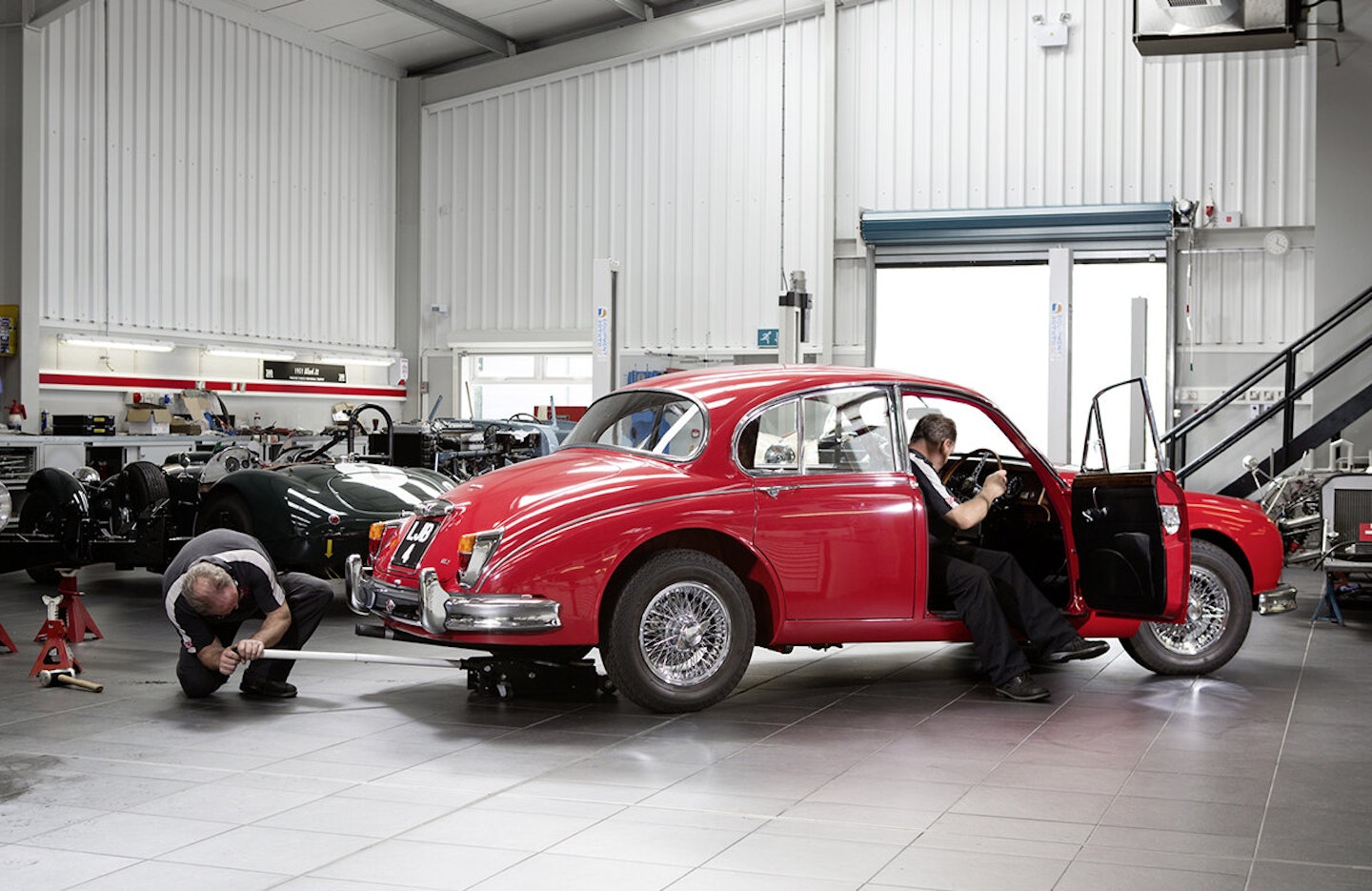
The heater is covered in period-pattern insulating material and a black Lincon battery completes the underbonnet look. As modified by Coombs, the car ran the carburettors with open bellmouths, but for actual driving a pair of sock filters slip on to stop dust and dirt ingress and thereby preserve the bores from wear. The radiator was one of the few ancillaries that had to be replaced rather than restored. ‘It looked perfect once we’d cleaned it up, and stood up to a cold pressure test. But in the car, as soon as it got up to 70°C it leaked like a watering can,’ says Keith-Lucas.
The rear sat too high on the retempered and reset rear springs, but CKLD drove it for a couple of hundred miles with a couple of hundredweight of cast iron in the boot, which has settled it down.
The cost of all this, of course, doesn’t stack up, but the patronage of an enthusiastic owner who is realistic about means that this important car has been preserved in as original condition as possible – and perhaps even better than new.
Shaun Lynn says: ‘I love the car. It handles really well, though the Moss gearbox is a bit of a nightmare, but it’s got plenty of torque. I intend to drive it to a lot of my races, and if it gets caught in the rain, so be it.’

The Coombs Jag
Offered as a hot Mk2 by Coombs of Guildford, the Jaguar dealer heavily involved in racing in the Fifties and Sixties, it’s a mythical beast, highly sought after and even more highly replicated. There was no definitive spec, just a catalogued list of modifications, and nobody knows quite how many were built. John Coombs has died recently, but Ken Bell worked for him and reckons the total Coombs ‘production’ is 35 or 36.
As it happened, the second owner of this 1961 car, a Mr Pullinger of Chessington, ticked just about all the options in 1966, including modifying the motor. At first the team was slightly troubled by the engine number not matching, but Ken Bell remembered that, following a tuning job on a high-mileage motor that blew up, John Coombs insisted on modifying only new engines, which explains the discrepancy, as this car was six years old when it was converted.
Only around 25 Mk2 3.8s are known to the Coombs Register, and Bell, who worked there from 1958 to 1967, adds, ‘Of course not all of them would have had all the modifications. Some cars retained the 1¾in SUs, and probably only 10 or 15 had the reworked anti-roll bar. Only two or three customer cars had the bonnet louvres.’
Rae Davis found ‘our’ car with his knack of nosing out interesting finds, advertised in the back of nowhere. ‘Very often, if you only see a landline and not a mobile number, it’s very likely to be an older person and it won’t be on the internet,’ he says. ‘So, just like the old days, you have to get there fast.’
